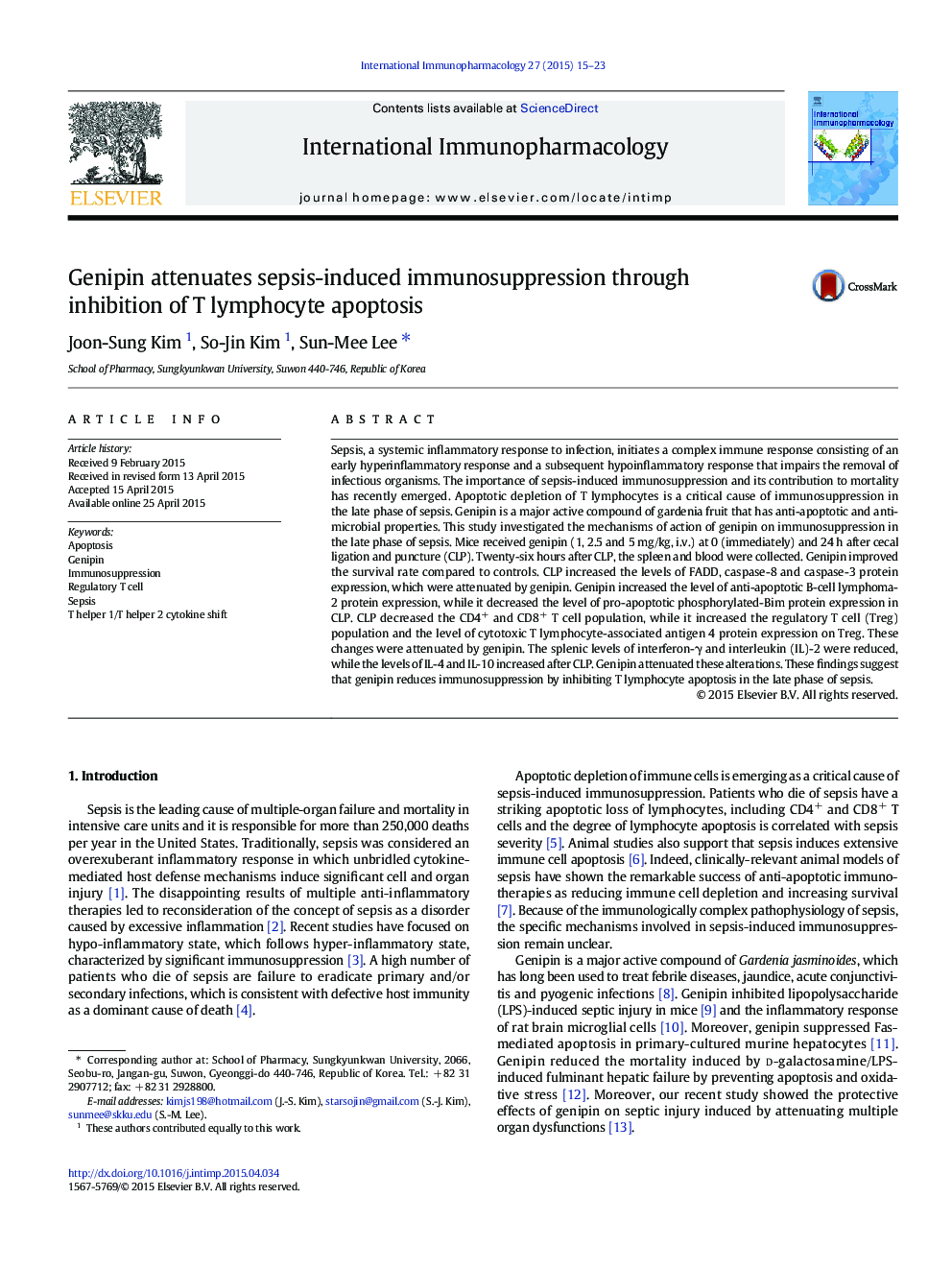| کد مقاله | کد نشریه | سال انتشار | مقاله انگلیسی | نسخه تمام متن |
|---|---|---|---|---|
| 2540654 | 1122603 | 2015 | 9 صفحه PDF | دانلود رایگان |

• Genipin attenuates sepsis-induced immunosuppression.
• Genipin inhibits T lymphocyte apoptosis in the late phase of sepsis.
• Genipin suppresses Th1/Th2 cytokine shift in the late phase of sepsis.
Sepsis, a systemic inflammatory response to infection, initiates a complex immune response consisting of an early hyperinflammatory response and a subsequent hypoinflammatory response that impairs the removal of infectious organisms. The importance of sepsis-induced immunosuppression and its contribution to mortality has recently emerged. Apoptotic depletion of T lymphocytes is a critical cause of immunosuppression in the late phase of sepsis. Genipin is a major active compound of gardenia fruit that has anti-apoptotic and anti-microbial properties. This study investigated the mechanisms of action of genipin on immunosuppression in the late phase of sepsis. Mice received genipin (1, 2.5 and 5 mg/kg, i.v.) at 0 (immediately) and 24 h after cecal ligation and puncture (CLP). Twenty-six hours after CLP, the spleen and blood were collected. Genipin improved the survival rate compared to controls. CLP increased the levels of FADD, caspase-8 and caspase-3 protein expression, which were attenuated by genipin. Genipin increased the level of anti-apoptotic B-cell lymphoma-2 protein expression, while it decreased the level of pro-apoptotic phosphorylated-Bim protein expression in CLP. CLP decreased the CD4+ and CD8+ T cell population, while it increased the regulatory T cell (Treg) population and the level of cytotoxic T lymphocyte-associated antigen 4 protein expression on Treg. These changes were attenuated by genipin. The splenic levels of interferon-γ and interleukin (IL)-2 were reduced, while the levels of IL-4 and IL-10 increased after CLP. Genipin attenuated these alterations. These findings suggest that genipin reduces immunosuppression by inhibiting T lymphocyte apoptosis in the late phase of sepsis.
Journal: International Immunopharmacology - Volume 27, Issue 1, July 2015, Pages 15–23